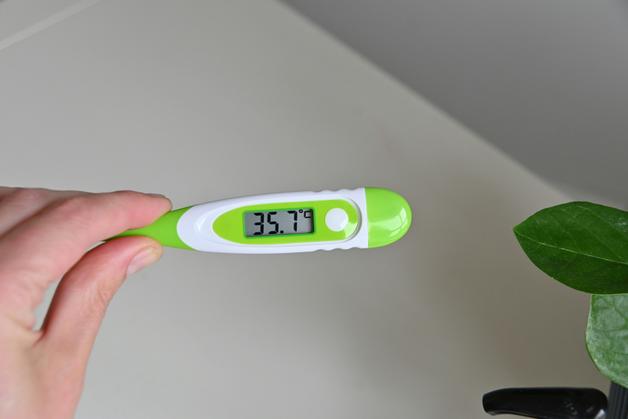Wondering if the whirlwind of energy in your home signals a simple zest for life or points to a struggle beneath the surface? Worrying, tracking every burst of movement, every impulsive shout, every restless night? Navigating the world of a hyperactive child often means juggling uncertainty and fatigue, puzzling over where spirited childhood ends and where something more enduring begins. Families and teachers, searching for answers, crave practical strategies, reassurance, and science-backed clarity. Here, the curtain lifts on what patterns to watch for, the medical backdrop to those behaviors, medical perspectives on diagnosis and treatment, and, crucially, hands-on guidance to help each hyperactive child—and their caregivers—find balance and hope.
Recognizing a Hyperactive Child: Early Signs and Underlying Factors
Every child bursts with energy at times—darting from activity to activity, loud with laughter, brimming with curiosity. But when a hyperactive child moves constantly, unable to settle even when calm is expected, the line between playfulness and persistent hyperactivity sharpens. Constant fidgeting, relentless talking, abrupt transitions from one task to the next, flaring impatience—these are more than just lively antics. Impulsivity, frequent emotional outbursts, and restlessness register in classrooms, at the dinner table, or even when the world goes quiet for bedtime.
Why does this happen? Science points to a blend of genetic predispositions, differences in neurological development, and sometimes, environmental stressors that nudge a child’s brain towards difficulty with self-regulation. These elements can, together, tip the balance from vibrant activity into terrain that feels unmanageable.
Is It Just Energy or True Hyperactivity?
Fleeting enthusiasm, bursts of silliness, and even moments of high-intensity play—normal, healthy. So, when should a parent pause and reconsider? The difference rests in persistence, intensity, and the impact on life. A hyperactive child seems to never switch off, lacking the natural pauses most children take. If transitions are always turbulent, sleep remains elusive, and frustration leads to regular meltdowns, it’s time for a closer look.
Short periods of rest and focused play will surface even in lively children; by contrast, hyperactivity is rarely punctuated by these intervals. The spectrum is wide, but key is to track behavior across settings—home, playground, school—and across time.
Debunking Common Myths About Hyperactivity
You may have heard it blamed on sugar, television, or on parents themselves. Yet, decades of research rebuff these claims. A hyperactive child can be momentarily calm—still, anxiety, fatigue, or overstimulation can play tricks. Genetics and brain chemistry steer the ship far more than screen time alone.
Contrary to some advice, “waiting it out” may not always pay off. While some symptoms abate over the years, for others they evolve, calling for proactive, adaptable support. Myths fade when exposed to the light of science and lived experience. Compassion grows, and so does the ability to intervene early and wisely.
Hyperactive Child: Observable Patterns and Practical Assessment
How does hyperactivity truly show itself? Here, incessant movement sets the stage—pacing, tapping, an inability to remain seated. Sleep may become fractured, with trouble falling or staying asleep, hinting at a nervous system unable to wind down. Dramatic emotional reactions to setbacks signal fragile coping skills. Genuine concern arises when such patterns persist despite parental structure and positive feedback.
A thoughtful parent or teacher observes these moments across activities and environments. Recognizing a hyperactive child often starts with careful, compassionate attention to everyday rhythms.
From Concern to Diagnosis: Medical Evaluation Explained
Clinical assessment weaves together interviews, standardized questionnaires, and behavioral checklists—tools shaped by decades of research. For children under six, the process emphasizes developmental context: crawling, running, exploring at a faster pace might simply reflect temperament, but constant agitation or inability to relax is more significant.
Beginning around age six, when school demands sharpen the contrast, professionals consider more formal strategies—drawing on guidelines like the DSM-5 (Diagnostic and Statistical Manual of Mental Disorders, Fifth Edition), which meticulously describes criteria for conditions like Attention-Deficit/Hyperactivity Disorder (ADHD).
Diagnosis remains medical, grounded in observation over at least six months across more than one environment. Disorders imitating hyperactivity—anxiety, learning disabilities, sensory processing issues—are carefully considered and ruled out.
Delineating Hyperactivity and ADHD: Nuances and Overlap
Not every hyperactive child will meet the diagnostic bar for ADHD. The condition, defined by a triad of hyperactivity, inattention, and impulsivity, presents in varied proportions. The DSM-5 outlines subtypes: inattentive, hyperactive-impulsive, or combined presentation. Symptoms must manifest before age twelve and appear in both home and school.
A child may bounce, fidget, or have explosive reactions and yet show focused attention in particular contexts. This complexity means no single screening or checklist suffices—thorough, nuanced multidisciplinary assessment ensures the right support is offered.
Comorbidities—when other neurodevelopmental or emotional conditions exist alongside hyperactivity—widen the landscape. Autism spectrum disorder, oppositional defiant disorder, bipolar disorder, and even some sleep disorders can feature overlapping behaviors. Medical clarity, then, is paramount.
Origins and Ripple Effects: What Drives Hyperactivity?
Research pinpoints a host of influences:
- Genetic variations—influencing how the brain processes dopamine and other neurotransmitters.
- Family history—raising risk when siblings or parents share similar symptoms.
- Prenatal exposures—such as maternal smoking, alcohol, and even premature birth or low birth weight.
- Environmental factors—childhood adversity, family stress, and inconsistent routines may heighten symptoms.
- Rare dietary triggers—synthetic food colorings, preservatives—occasionally spark reactions in sensitive children.
Parental actions and home structure can buffer symptoms, but are rarely the underlying root. Recognizing these drivers helps families reframe blame and focus on what empowers positive change.
The toll on families—sleep deprivation, stress, altered sibling relationships—is real. A hyperactive child transforms household dynamics, sometimes in ways that exhaust even the most resilient caregivers. Support, understanding, and a steady approach are antidotes.
Interventions and Professional Support: Evidence-Based Approaches
There’s no silver bullet. Successful support blends medical oversight, behavioral strategies, and—when appropriate—medication. Stimulant medications (like methylphenidate or amphetamines) are often prescribed, shown in rigorous trials to moderate symptoms for many; side effects are monitored closely under a physician’s care. Non-stimulant medications, including atomoxetine or guanfacine, expand the toolkit.
Behavioral interventions—parent training, Cognitive Behavioral Therapy (CBT), and social skills training—equip both the hyperactive child and their family with routines, emotional regulation tools, and smoother transitions. Neurofeedback and targeted occupational therapy sometimes complement the picture. Diet modification, sleep hygiene, and regular physical activity round out a holistic plan.
Multidisciplinary teamwork links doctors, therapists, teachers, and parents—ensuring consistent messages and sustained, data-driven support.
Home Strategies for the Hyperactive Child: Creating Calm in the Everyday
How does this look in real life? Start with predictable routines—meals, play, bedtime arrive on schedule. Visual supports, checklists, and reminders allow a hyperactive child to anticipate what’s next. Organize the environment: minimize visual clutter, offer a quiet corner with soft textures and gentle lighting.
Celebrating even small achievements builds self-worth. Offer positive reinforcement—praise, reward systems, frequent encouragement—focused less on perfection, more on growth and effort. Discipline stays consistent, kind, and predictable. Avoid punitive approaches, favoring gentle guidance and simple choices.
Take note of triggers: Is the afternoon transition rocky? Does screen time before bed spike restlessness? Tracking these patterns can preempt meltdowns.
Classroom Adaptations: Tools for Teachers and School Success
A hyperactive child thrives when teachers anticipate needs. Preferential seating; frequent, movement-based breaks; chunked assignments—all make a difference. Individualized Education Plans (IEPs) or 504 Plans legally secure tailored modifications, from extra test time to alternative formats for assignments.
Teachers keep communication channels wide open, sharing updates and adjustments with families. Group social skills sessions reinforce positive interactions—not just academics. A focus on strengths—art, math, humor, kindness—powers resilience and confidence, sometimes overlooked in a flurry of reminders and redirections.
Fostering Social and Emotional Resilience
Friendship challenges, impulsive acts, and stormy emotions can shadow even the happiest days. Intentionally teaching emotional regulation, recognizing signals of stress, and coaching problem-solving skills helps a hyperactive child forge and keep friendships.
Role-playing common challenges, practicing taking turns, and using social stories all build competence. Boosting self-esteem means reinforcing strengths and normalizing mistakes as a path to learning.
If bullying or exclusion arises, fast, coordinated responses from adults set firm boundaries. Collaboration ensures skills are generalized across settings.
Lifestyle Choices: Everyday Paths to Better Balance
Channeling boundless energy needn’t mean constant correction. Outdoor play, organized sports, dance—these build executive function and drain off excess restlessness. Interspersing periods of calm—gentle music, guided breathing, sensory play—restores equilibrium.
Diet tweaks—watching for sensitivities, offering balanced meals, maintaining regular hydration—support attention regulation and mood stability. Screens and chaotic environments may intensify symptoms, so choose engaging, hands-on activities to anchor attention.
Sleep tips: predictable pre-bedtime routine, cool dark environment, soothing objects or white noise. Missing sleep often amplifies hyperactive tendencies, highlighting the tight connection between rest and regulation.
Myths and Scientific Realities: Setting the Record Straight
- Sugar and additives: Decades of controlled studies find no substantial link between sugar and hyperactive behavior except in rare, sensitive cases.
- Not all hyperactive children have ADHD: A hyperactive child may reflect a developmental phase, fatigue, anxiety, or external factors.
- Parenting and management: Family style shapes outcomes but isn’t the root cause of hyperactivity.
- It is not “bad behavior” or a sign of immaturity: Medical research describes authentic differences in brain function, not moral failing.
Understanding this fosters empathy, diffuses blame, and guides parents toward constructive action.
When to Reach Out: Professional Assessment and Urgent Support
Time to consult a professional? If behaviors frequently disrupt home or classroom function, if relationships falter, if sadness, aggression, or risk-taking emerges—these are signals for an expert opinion. Especially when a hyperactive child struggles for over six months, or when strong family history of ADHD or related conditions exists, outside help becomes more pressing.
In cases of self-injury, suicidal statements, or extreme distress, prioritizing emergency medical intervention is vital. Pediatricians, child psychologists, school counselors, ADHD organizations, helplines, and digital communities offer a web of resources, available both in person and remotely.
Key Takeaways
- Not every energetic child is a hyperactive child, but when restlessness and impulsivity persist and disrupt daily routines, consider a medical evaluation.
- ADHD represents one reason for hyperactivity—other conditions and development stages can look similar. Early, skilled recognition opens doors to tailored support.
- Structured routines, clear expectations, and frequent positive feedback empower a hyperactive child to better manage their world.
- Working with teachers and mental health professionals anchors a steady, positive journey through school and relationships.
- Above all, compassion for yourself as a caregiver and for your child’s unique rhythms is a powerful tool. Practical support, medical guidance, and a flexible, hopeful mindset transform challenges into opportunities for growth.
For tailored advice and free health questionnaires for your child, download the Heloa app—your companion for personalized support.
Questions Parents Ask
Can a hyperactive child have a successful school experience?
Absolutely. Many children who are hyperactive can thrive at school, especially when their unique way of engaging with the world is understood and supported. Positive collaboration between families, teachers, and support staff is key. Adjustments in the classroom, such as movement breaks or a more flexible learning space, can help children focus and participate. By valuing each child’s strengths, and encouraging their interests, school can become a place of growth and success.
How can I help my hyperactive child build friendships?
Social relationships can sometimes be challenging, but they are truly within reach. Supporting your child in understanding social cues, practicing turn-taking, and using gentle reminders can all help. Encourage open conversations about feelings and friendships, and celebrate small steps forward. Group activities or team sports—where energy is welcome—can provide spaces to form connections. Rassurez-vous: with patience, empathy, and encouragement, many children learn to build strong, meaningful friendships.
When should I worry about my child’s hyperactivity?
Some days are more energetic than others, and that’s perfectly normal. However, il importe de consulter un professionnel de santé si la vie familiale ou scolaire est réellement perturbée, ou si d’autres difficultés, comme des troubles de l’humeur, un retrait social ou des comportements dangereux, apparaissent. N’hésitez pas à demander conseil si votre inquiétude persiste : vous méritez d’être accompagné et écouté.

Further reading:









